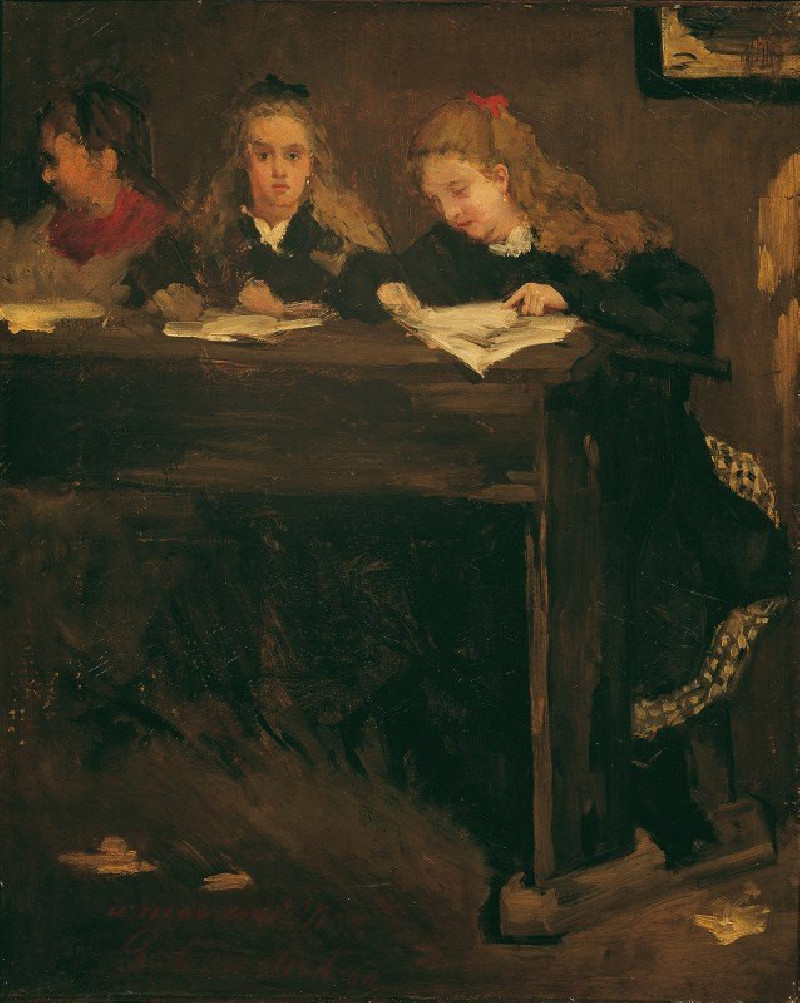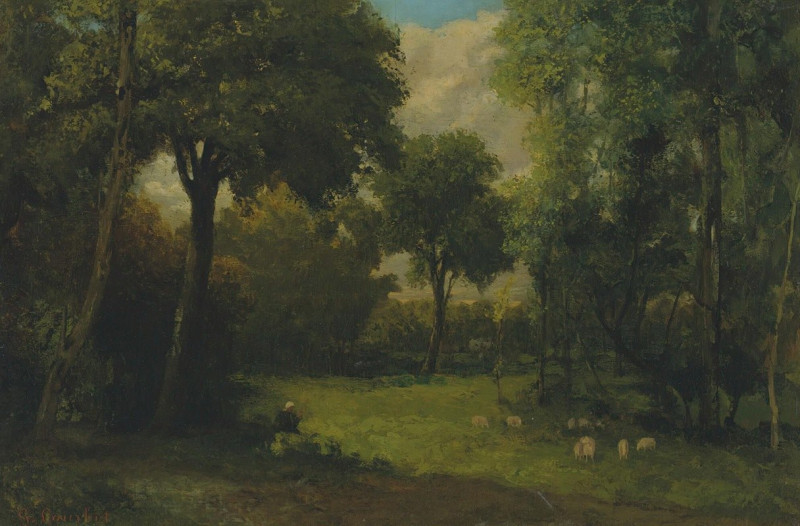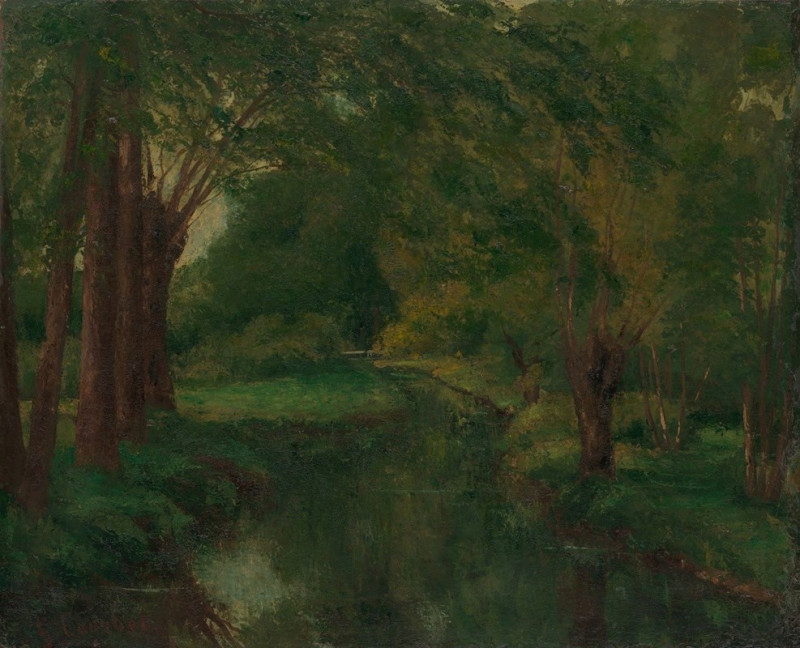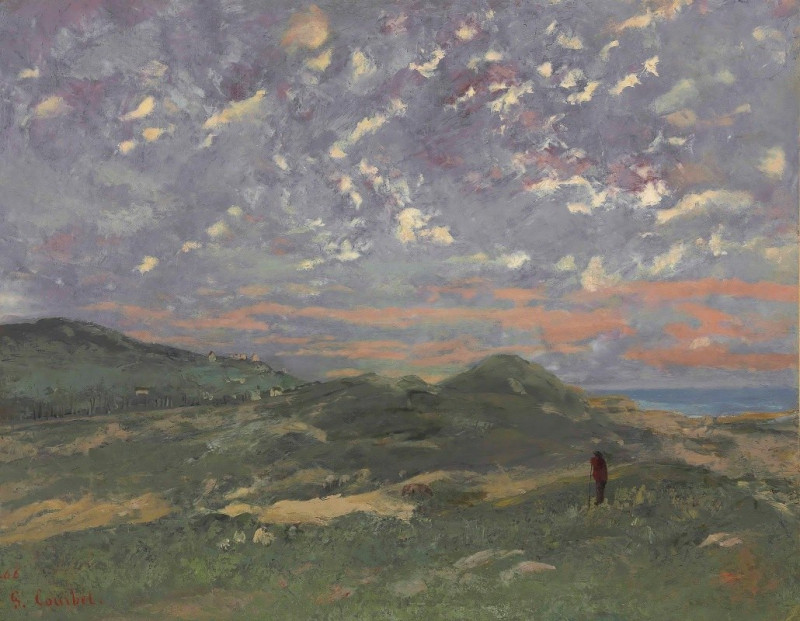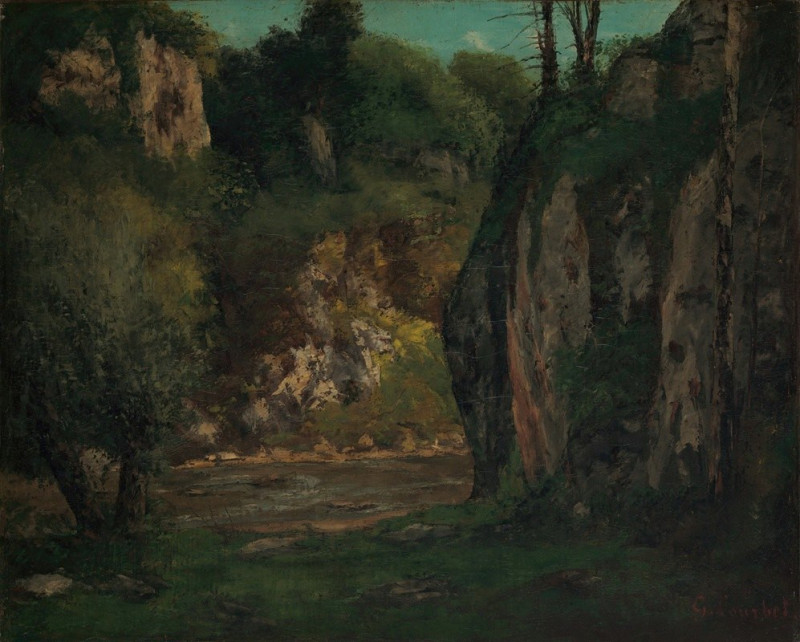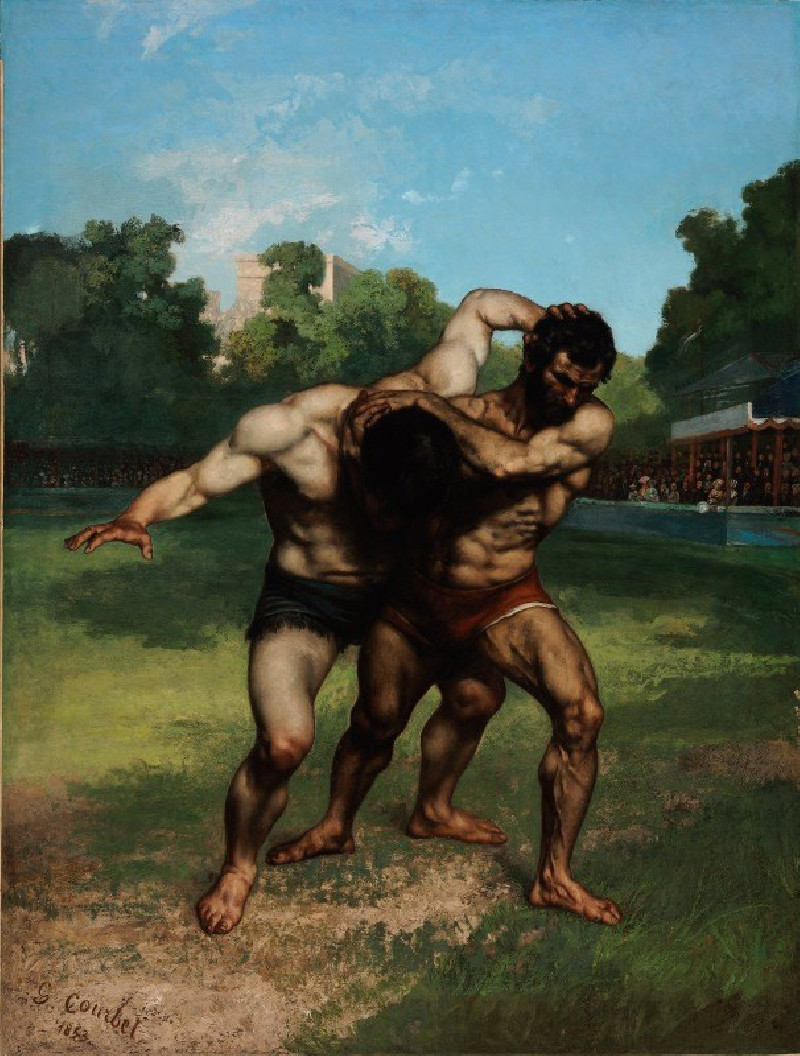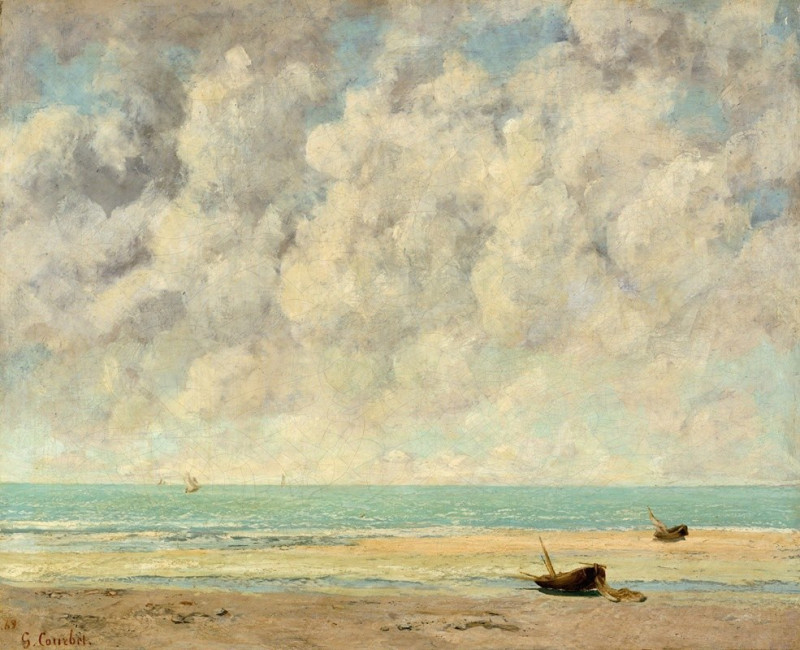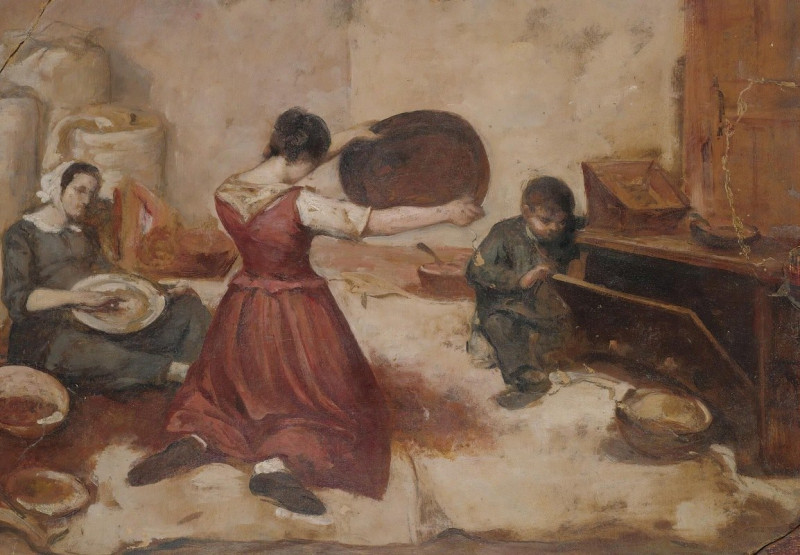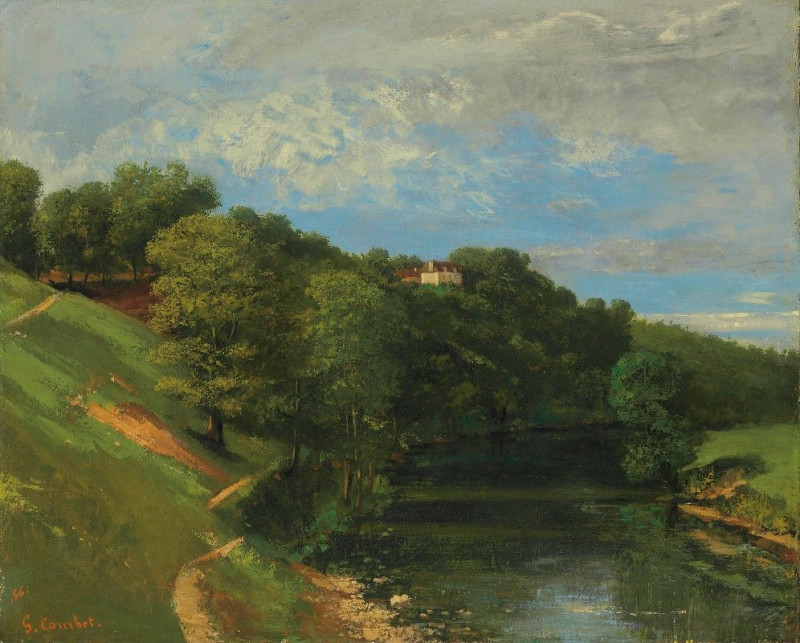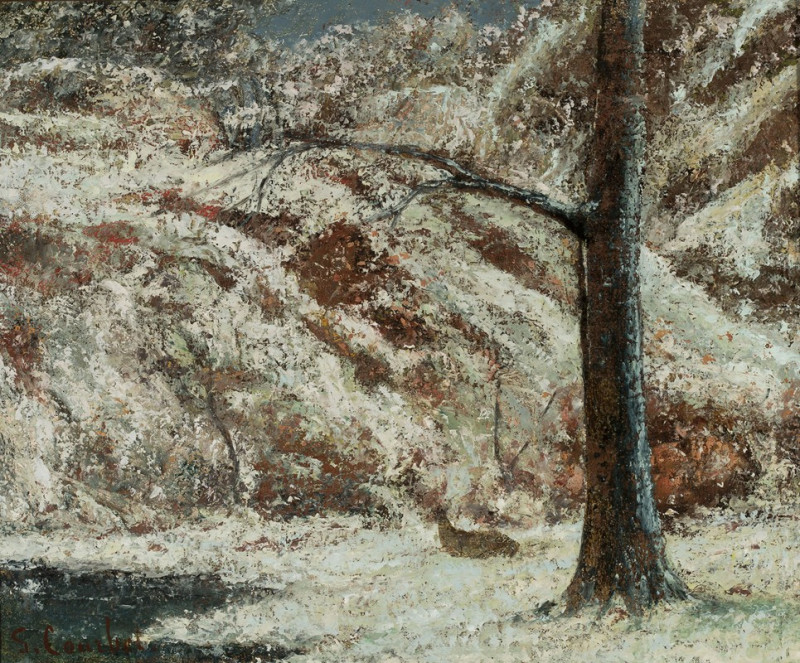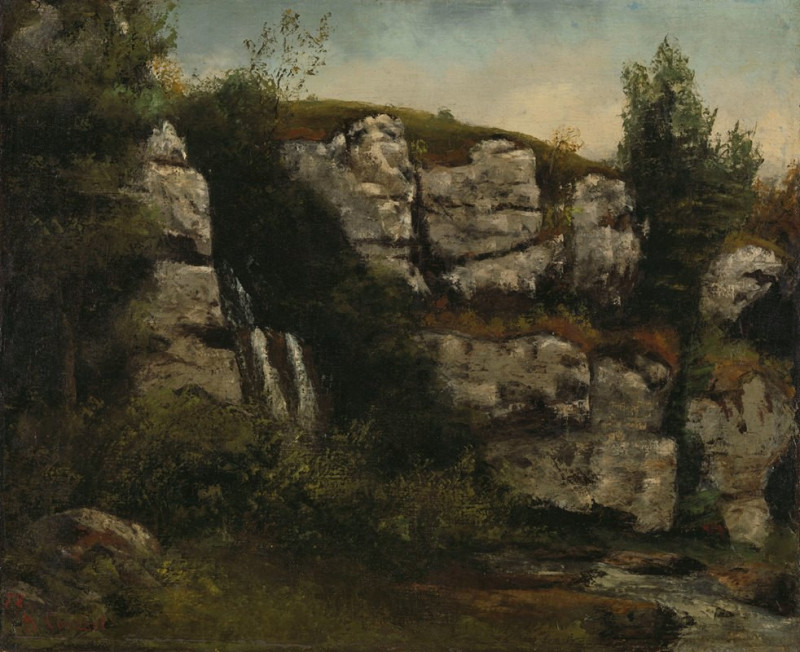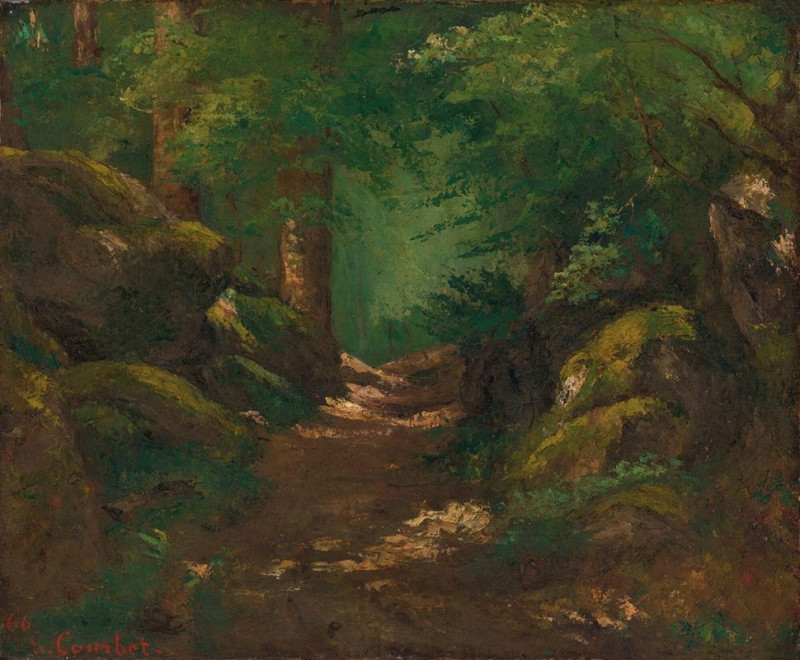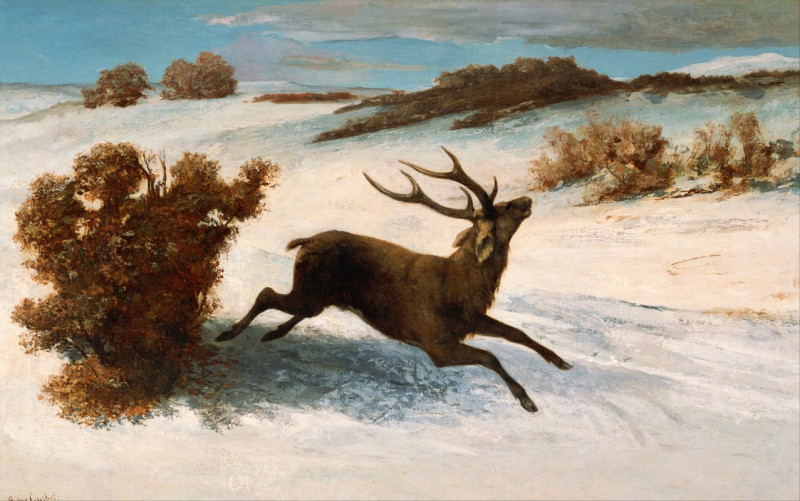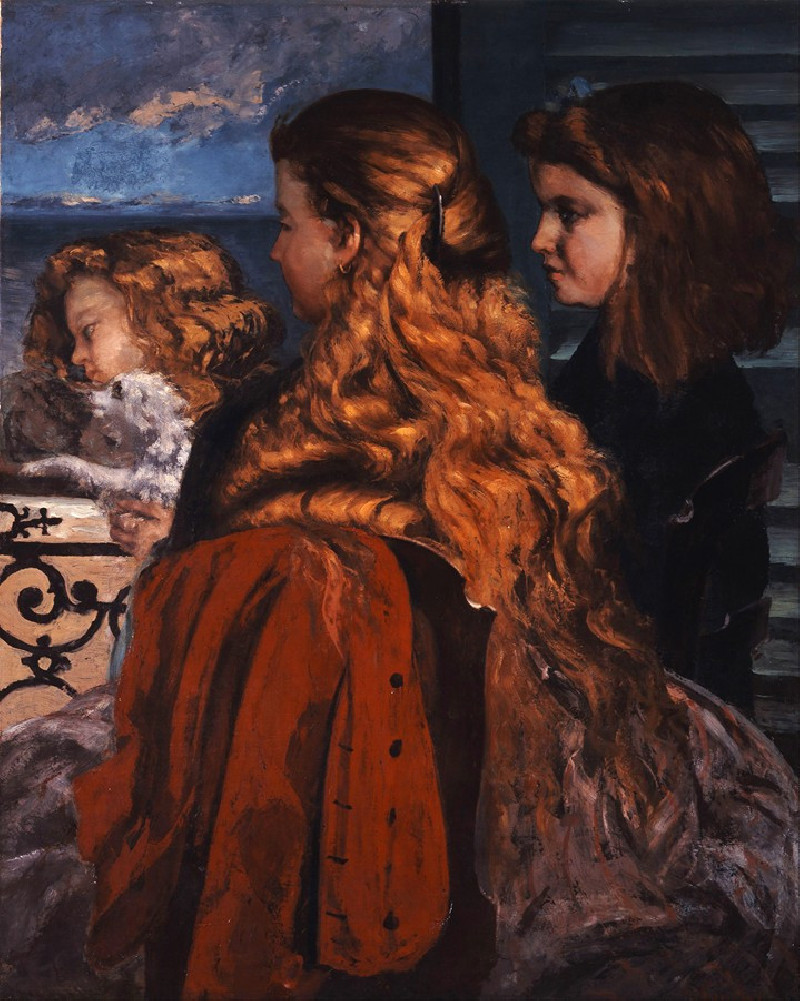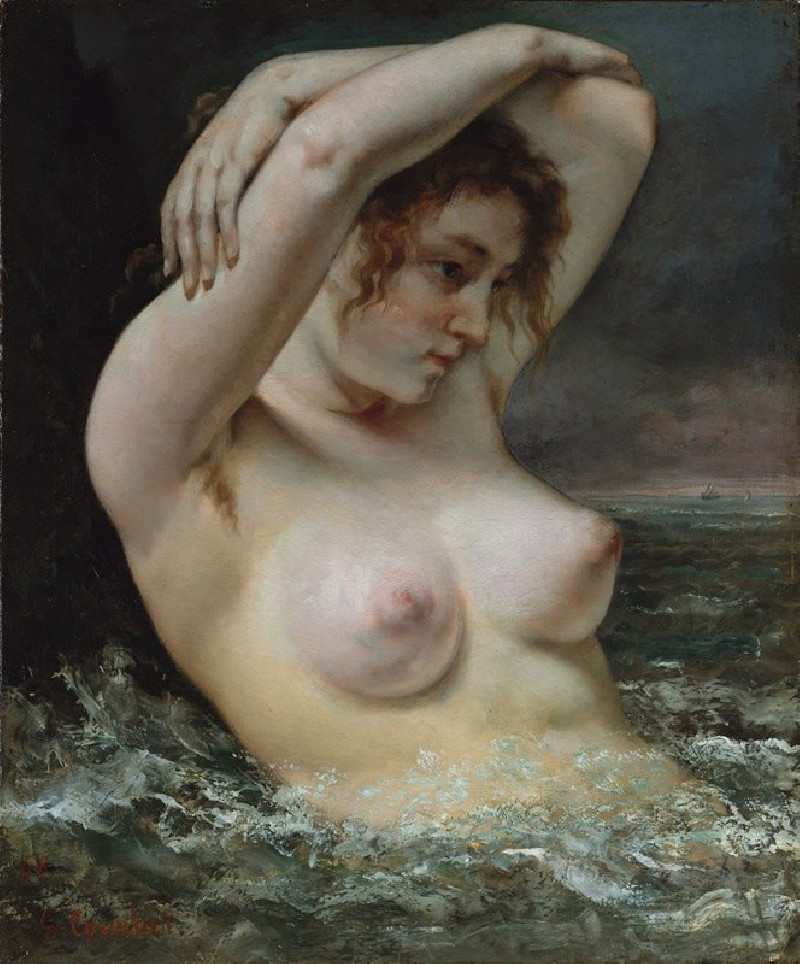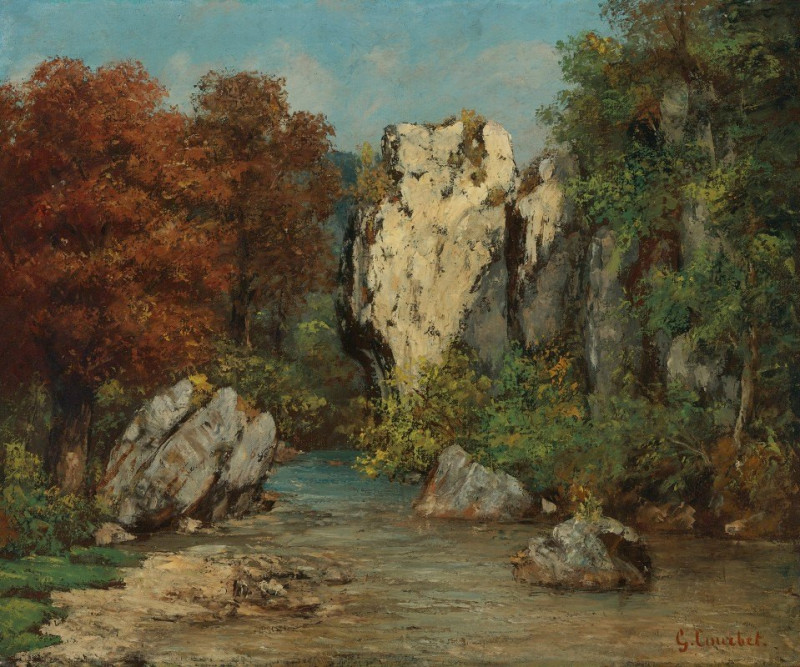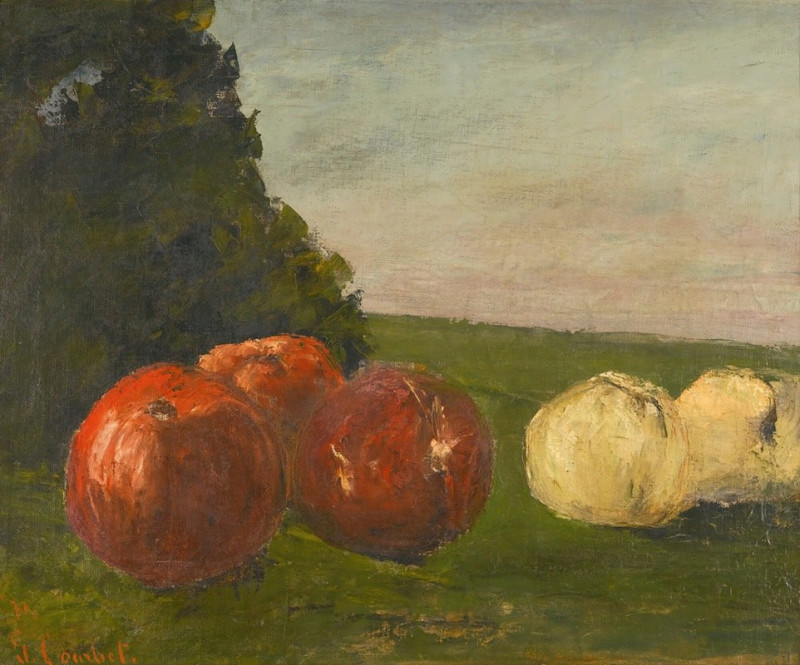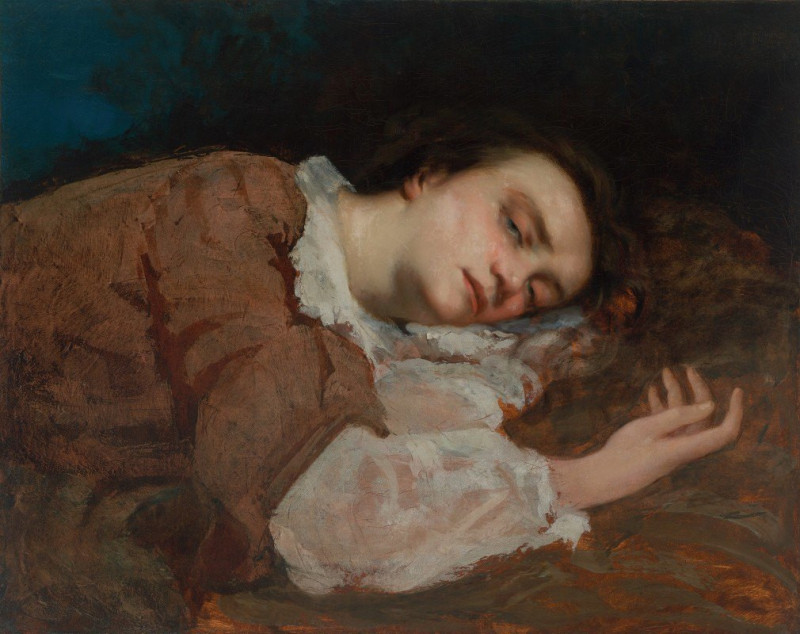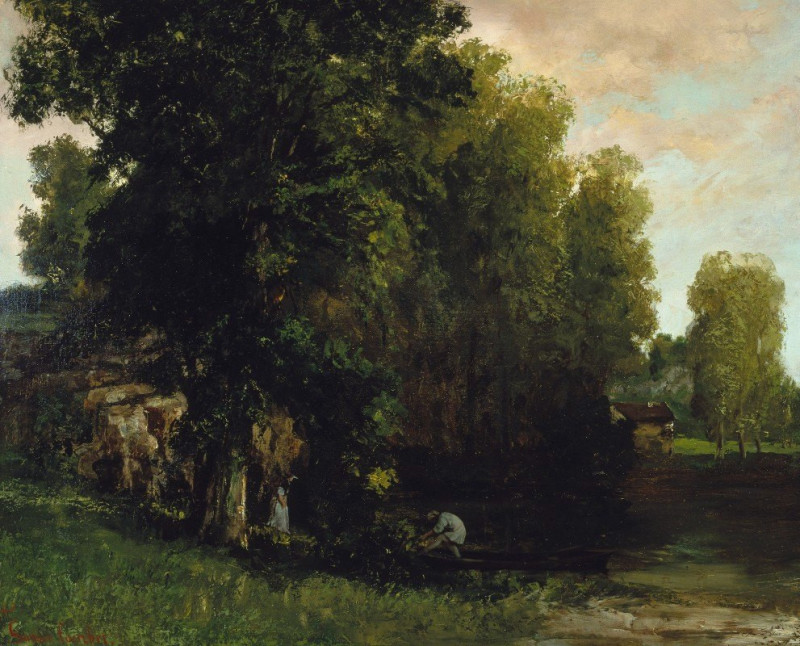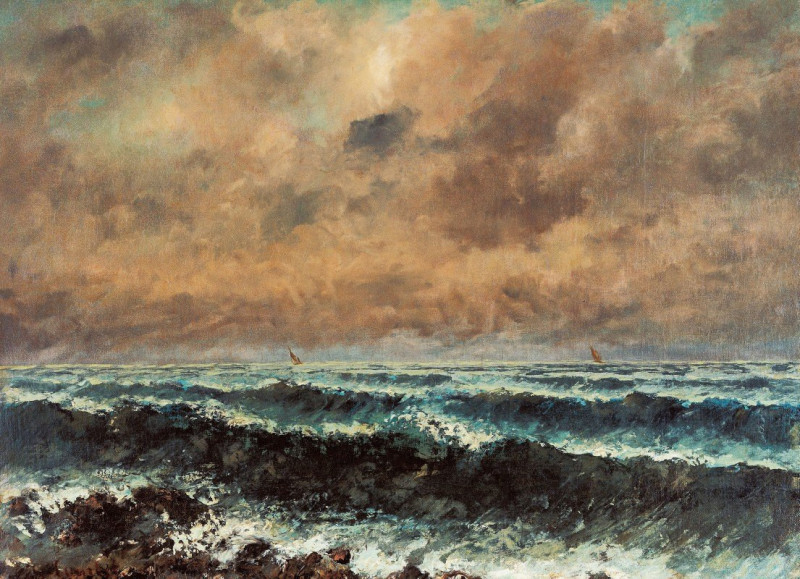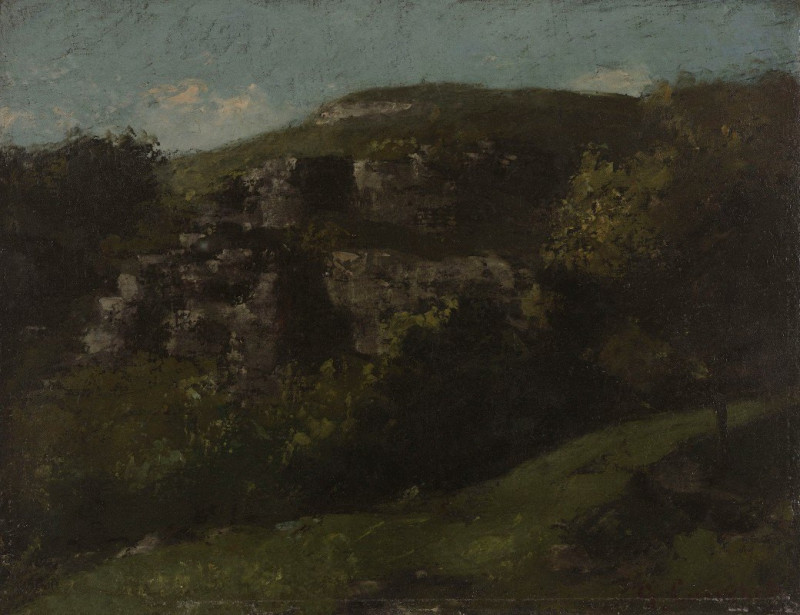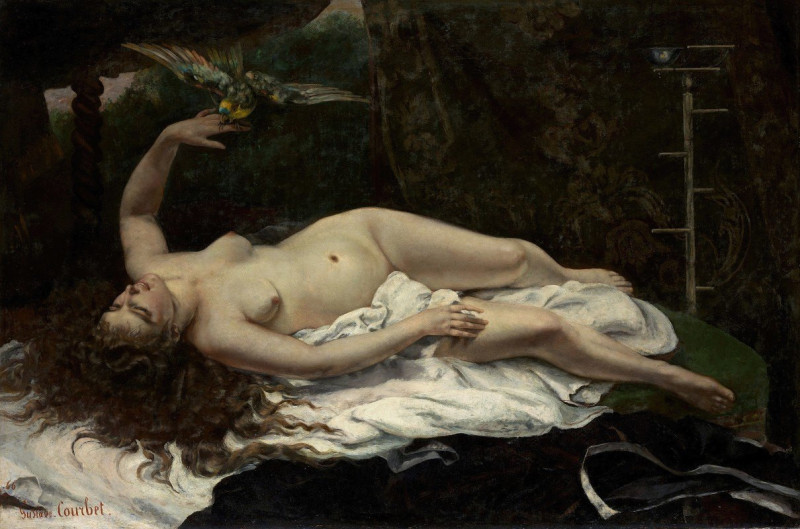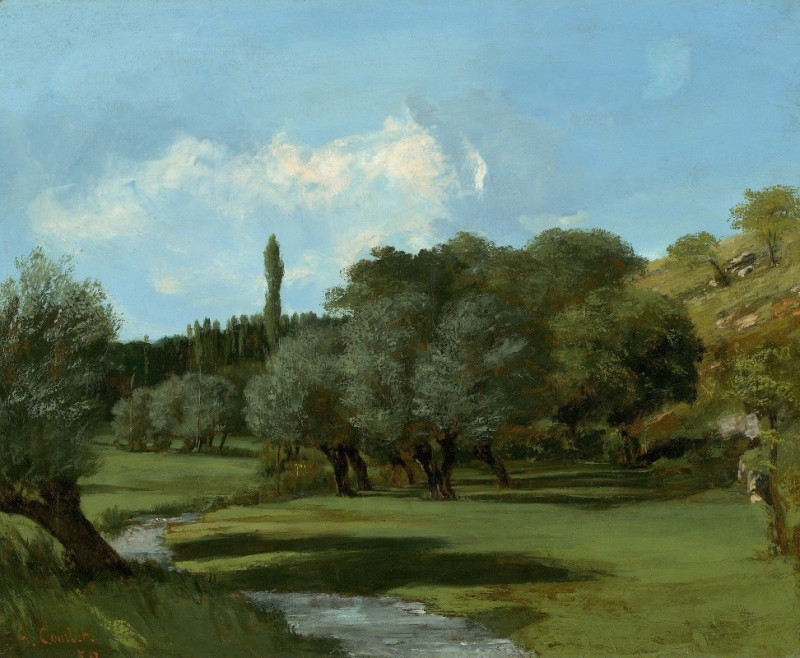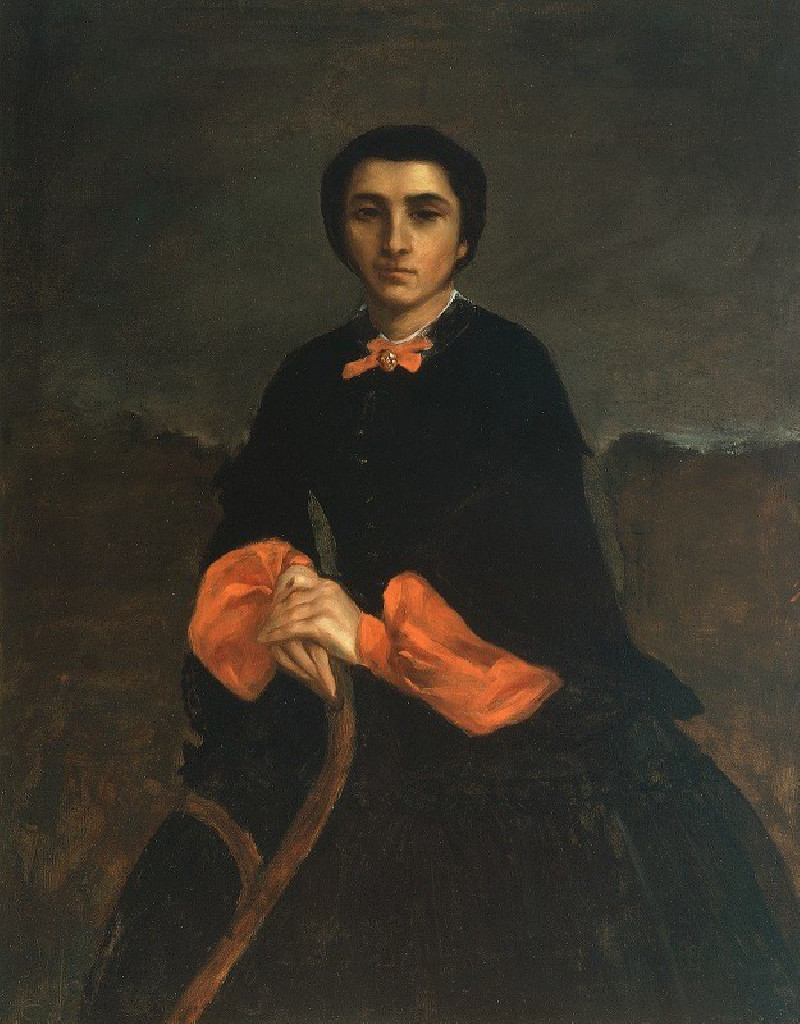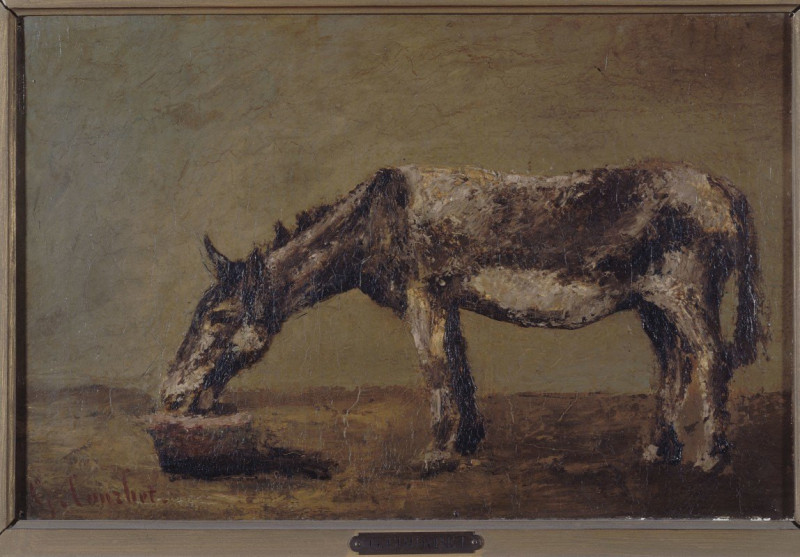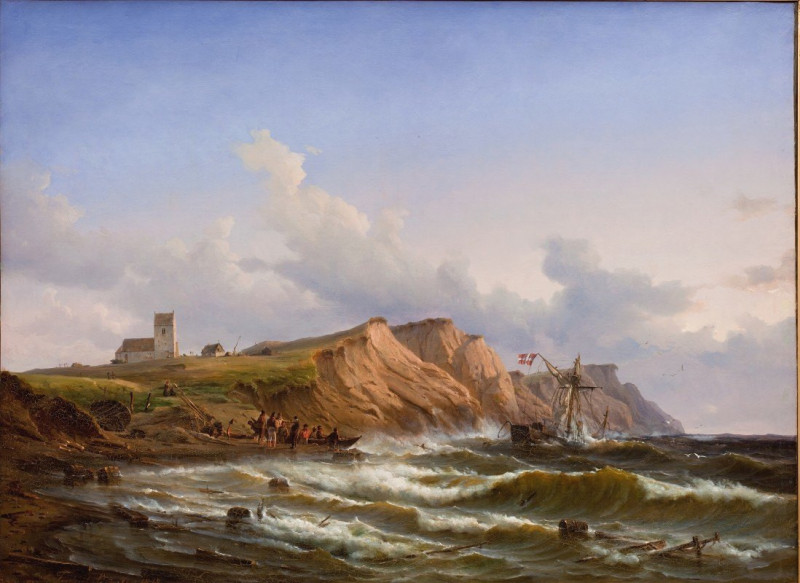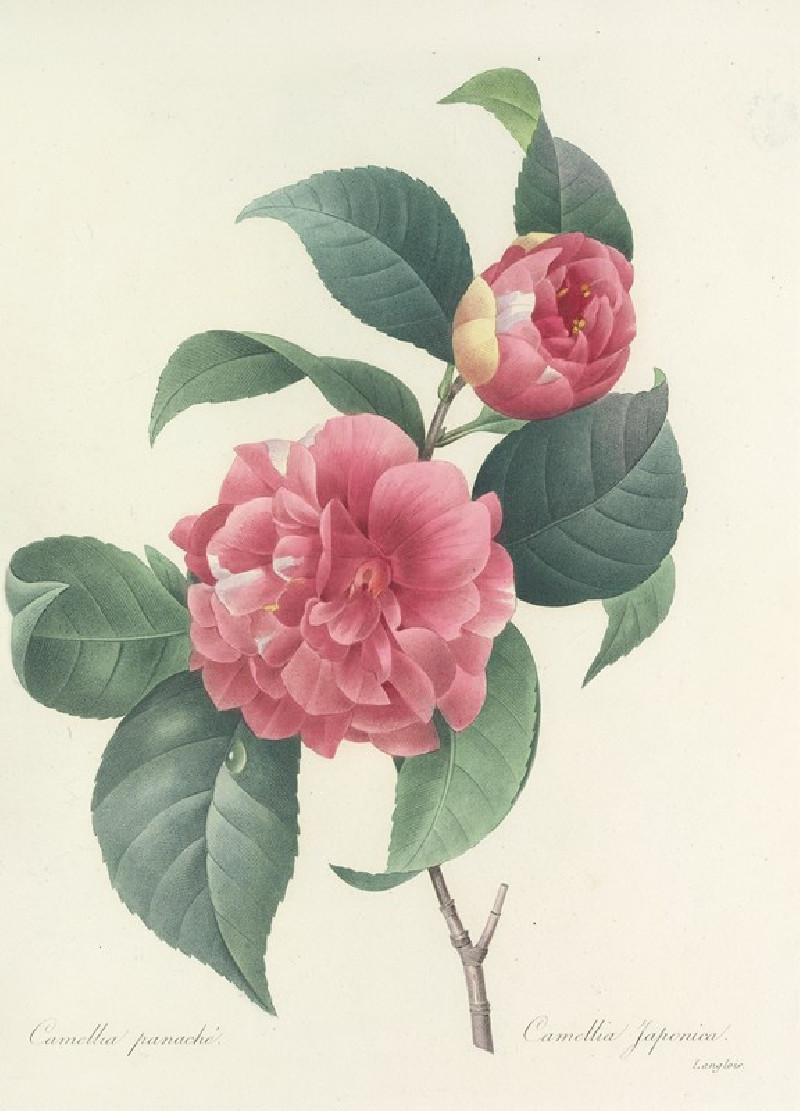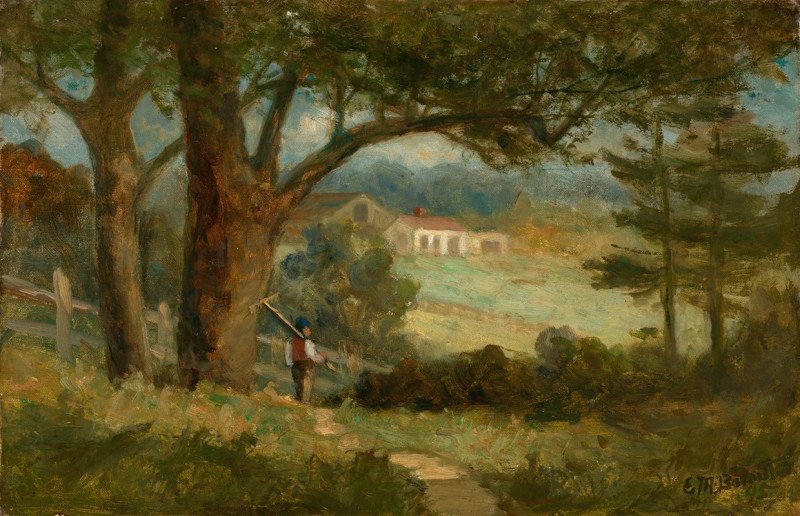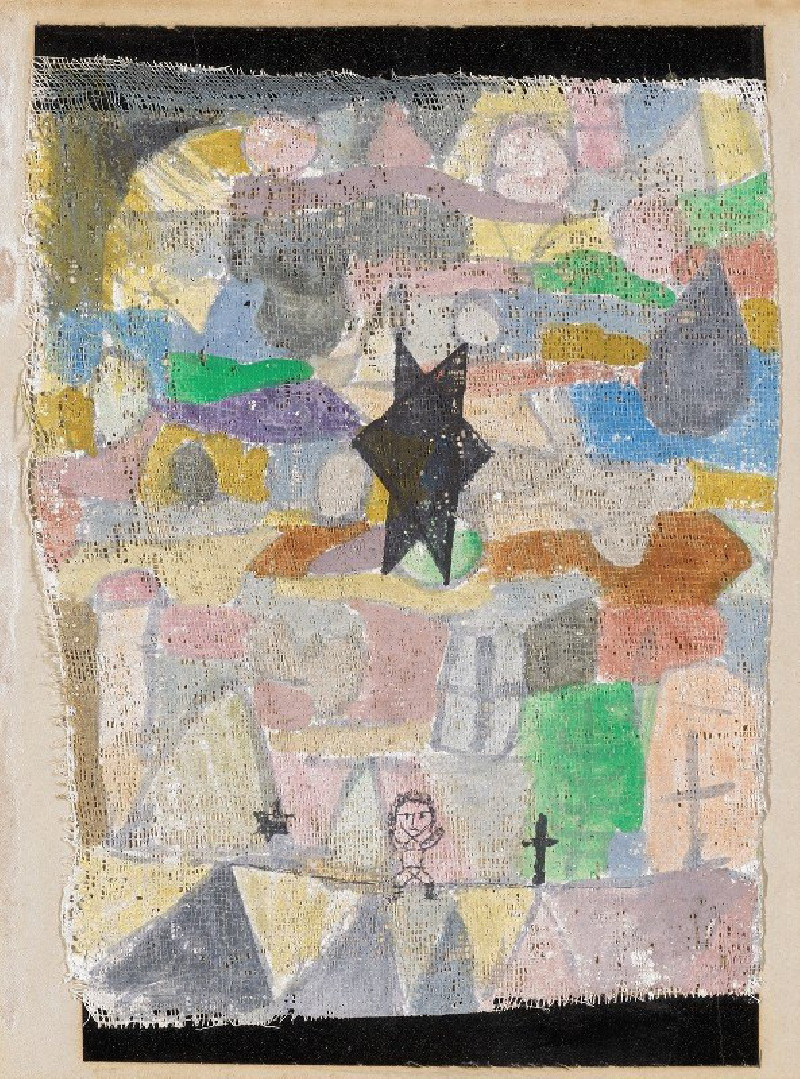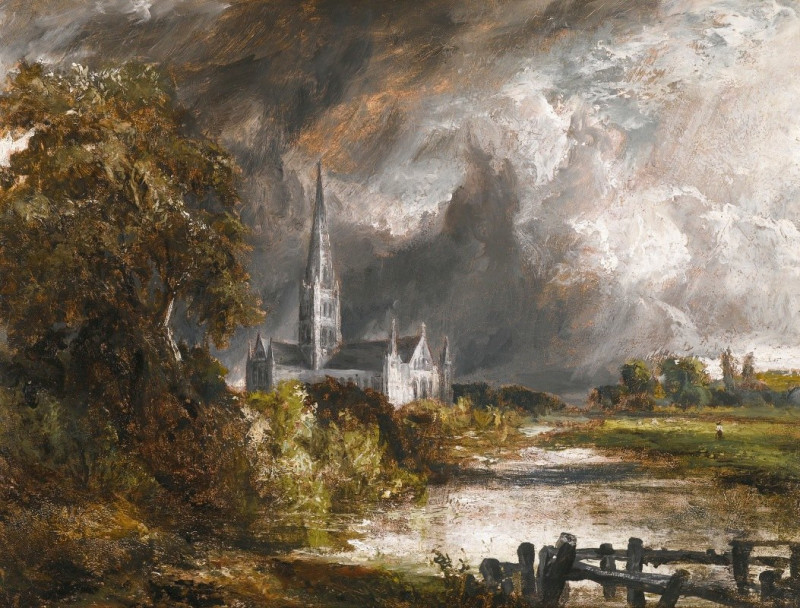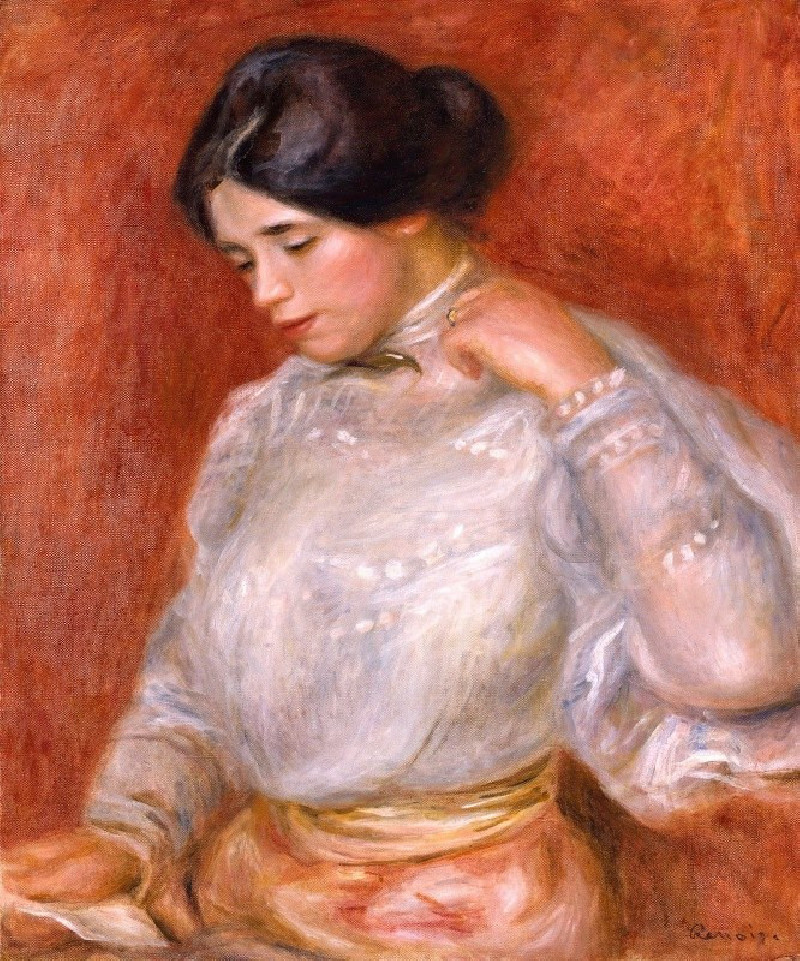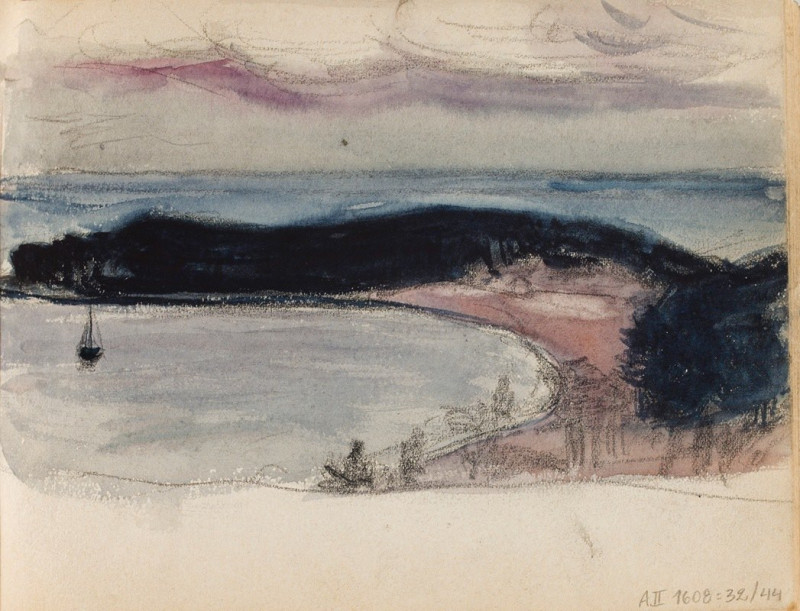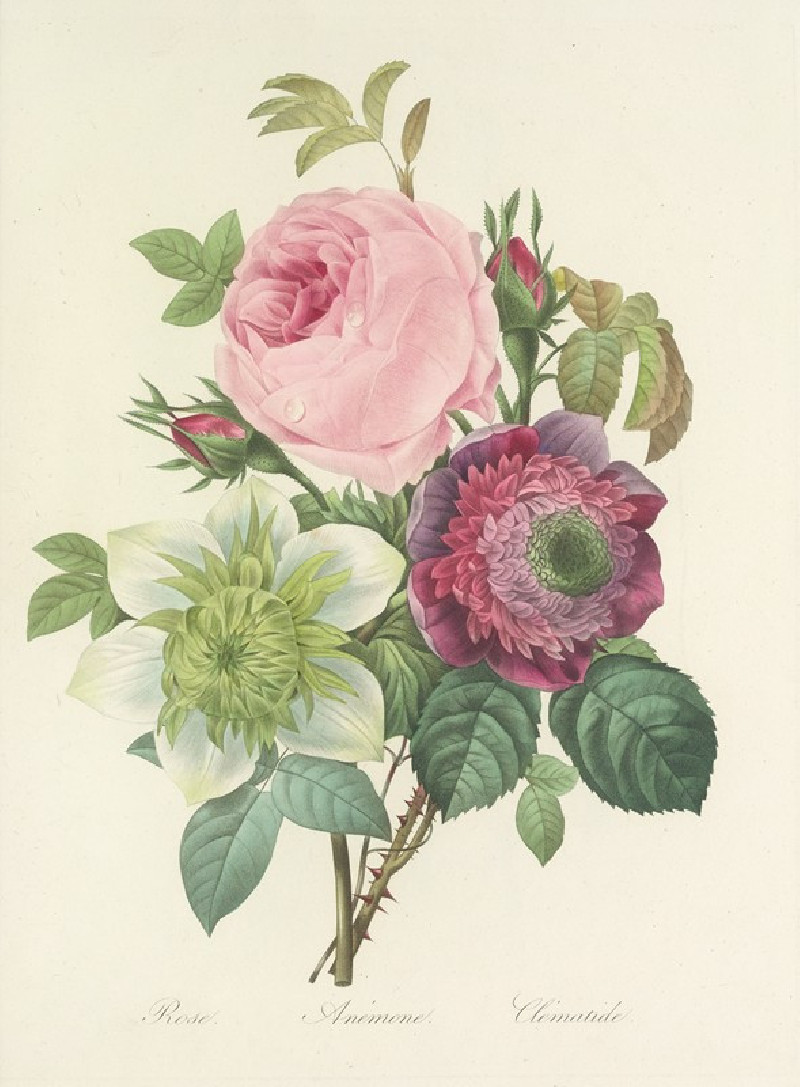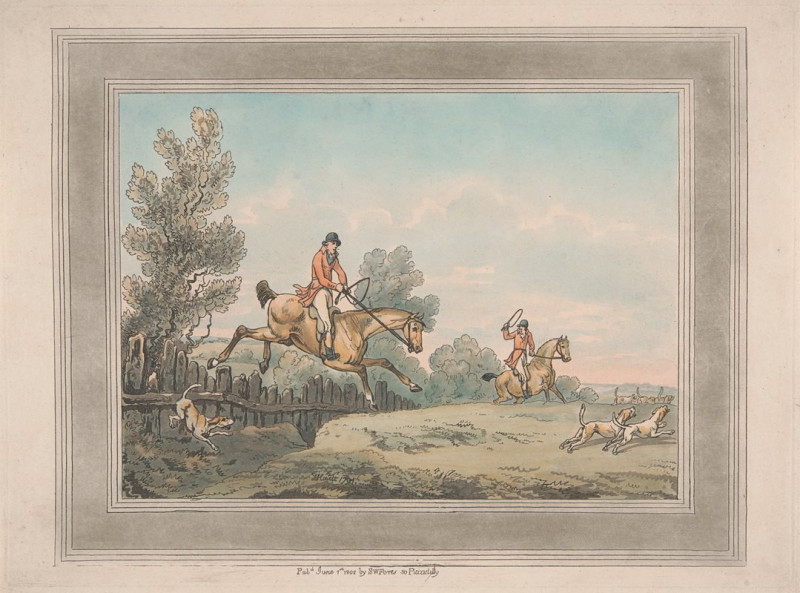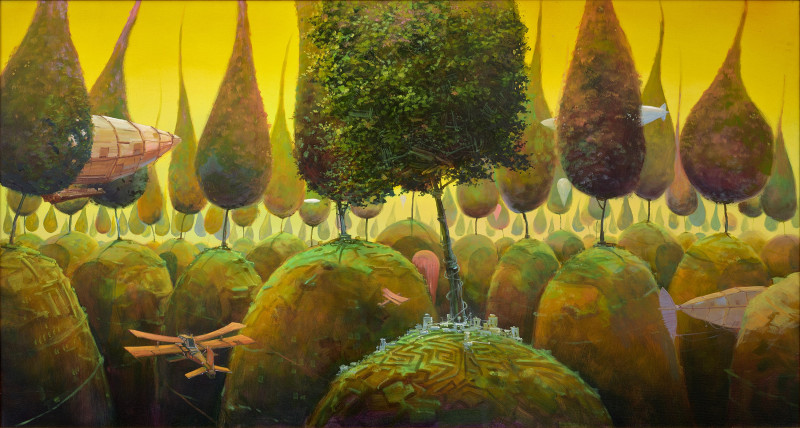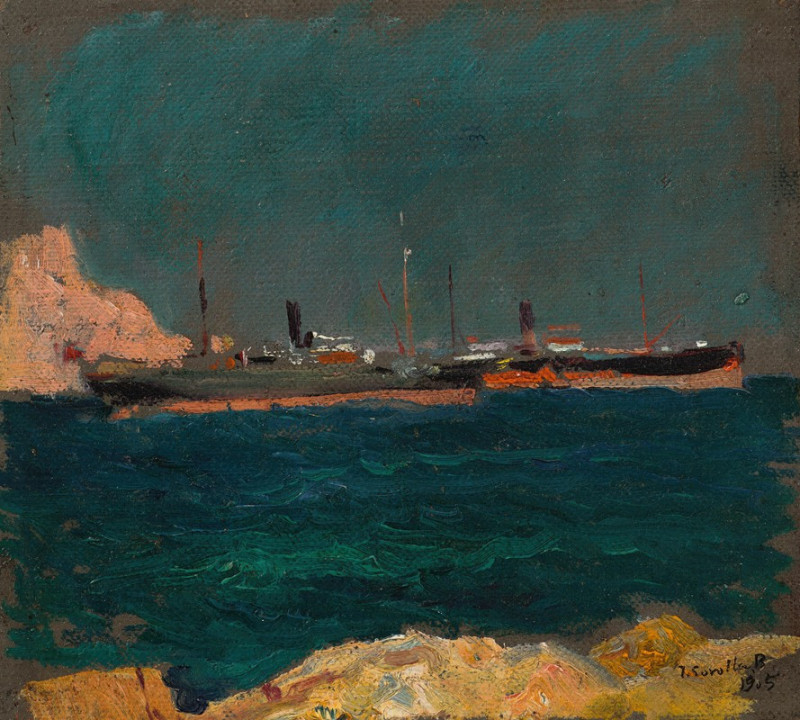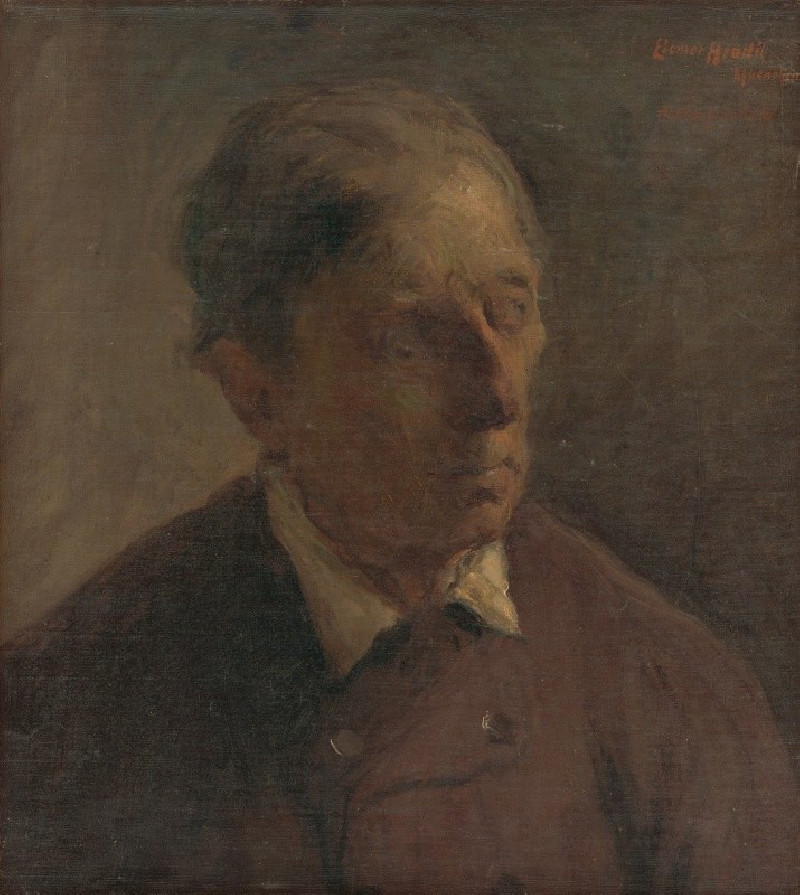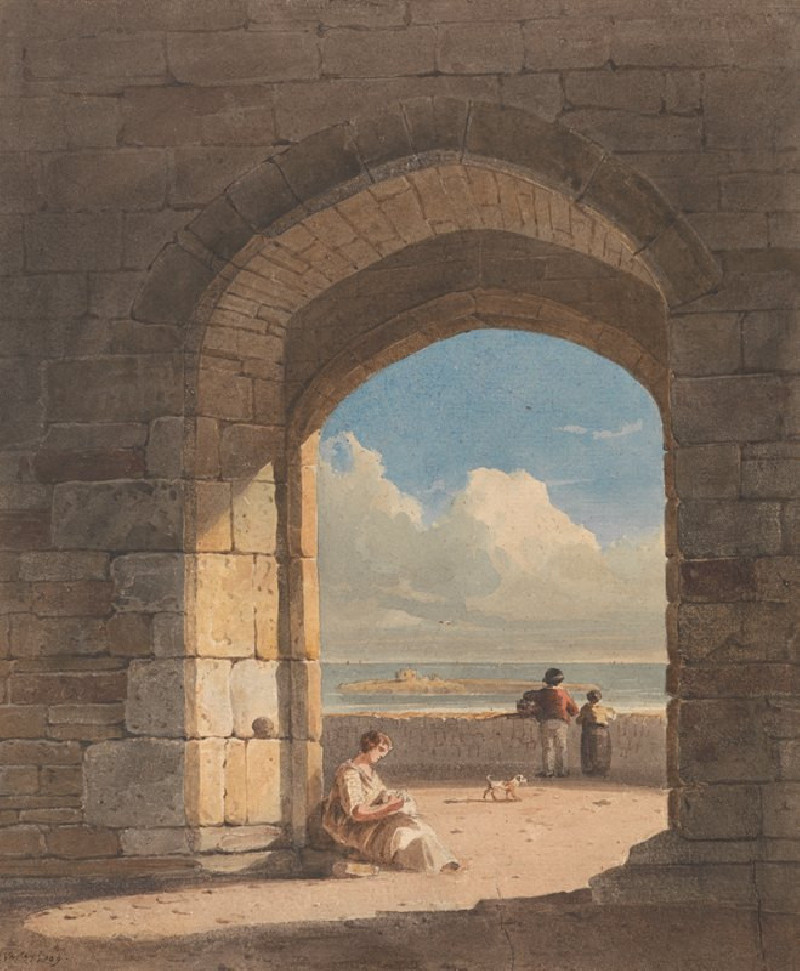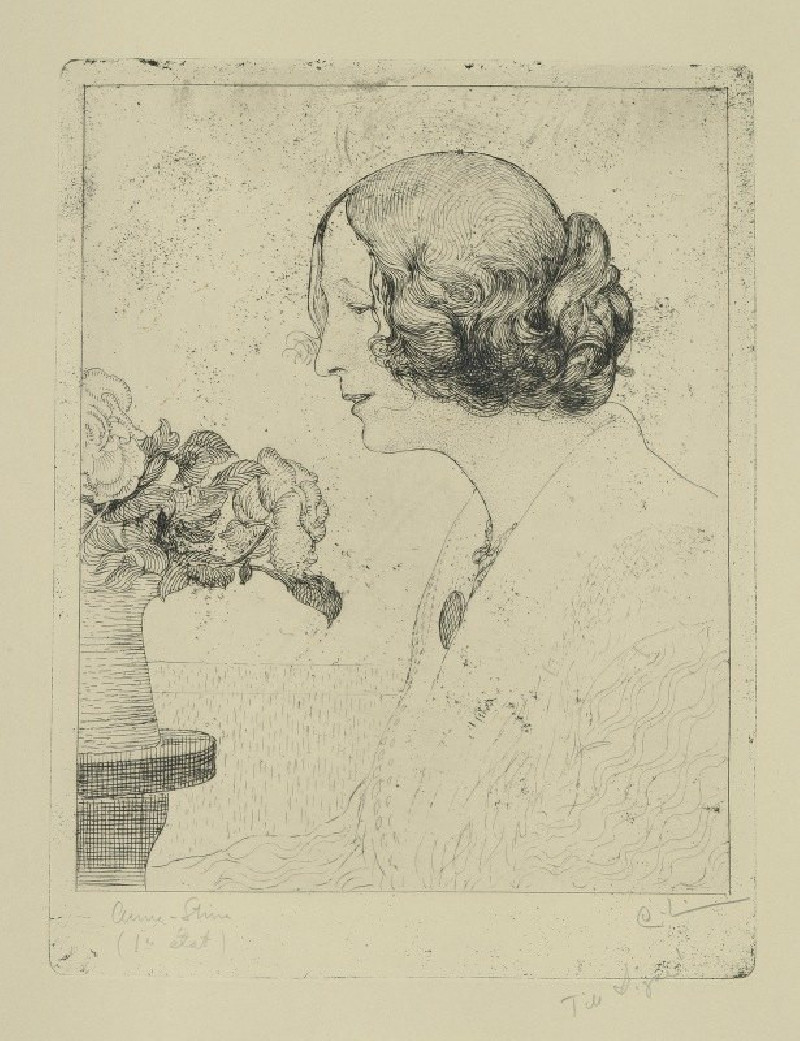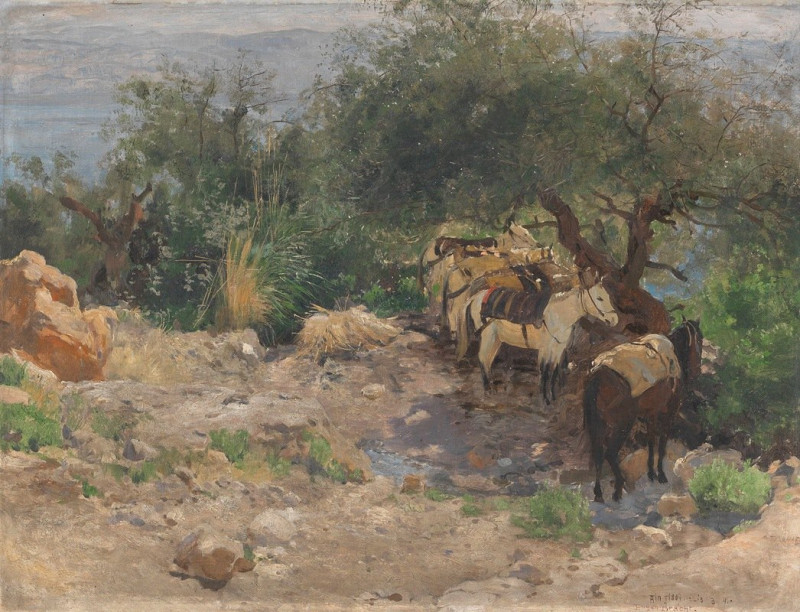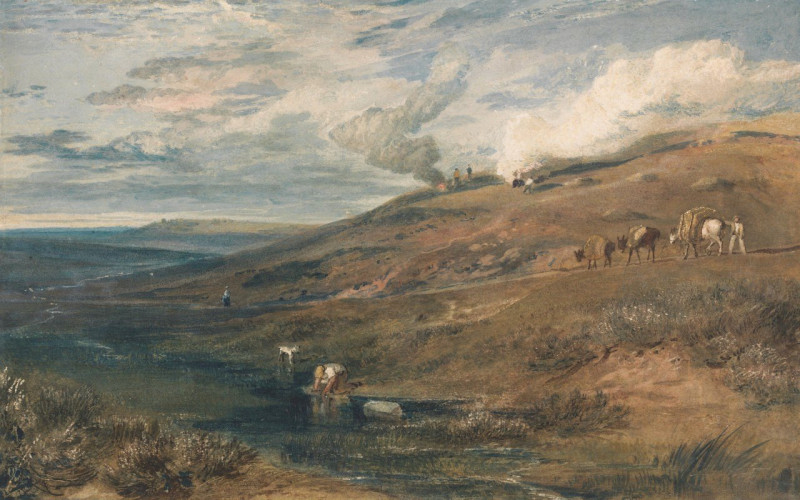The Deer (ca. 1865)
Technique: Giclée quality print
Recommended by our customers
More about this artwork
"The Deer" (ca. 1865) by Gustave Courbet captures a tranquil yet profound moment in nature, embodying the artist's commitment to realism and his passion for the natural world. In this evocative landscape, Courbet masterfully portrays a group of deer nestled in the shelter of a snowy forest. The scene is set in a secluded woodland, where the softness of the freshly fallen snow contrasts with the rugged, dark tones of the rocks and tree trunks.The composition is meticulously balanced, with the eye drawn towards the center where a gentle deer stands, serenely alert. Nearby, other members of the herd rest, integrating seamlessly into the environment, almost as if they are emerging from the landscape itself. Courbet's brushwork brings a sensory richness to every element, from the rough bark of the trees to the delicate, icy branches weighed down by snow.This painting is not just a visual study but also an emotional reflection, suggesting themes of peace, vulnerability, and the beauty of undisturbed nature.
Delivery
Returns
Jean Désiré Gustave Courbet (10 June 1819 – 31 December 1877) was a French painter who led the Realism movement in 19th-century French painting. Committed to painting only what he could see, he rejected academic convention and the Romanticism of the previous generation of visual artists. His independence set an example that was important to later artists, such as the Impressionists and the Cubists. Courbet occupies an important place in 19th-century French painting as an innovator and as an artist willing to make bold social statements through his work.




